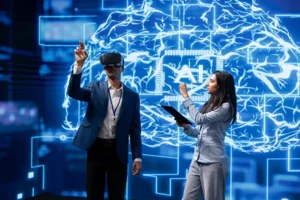Remember in ‘the old days’, you would write a letter to a friend describing your recent trip: the experience, the exhilaration, how relaxed you felt? A few days later your friend would receive it, and maybe a few days later they would write back, and then a few weeks after you sent your letter, you might get one in return.
Then we moved to email. Email is faster than writing and mailing a letter. It’s the same experience, just faster.
Describing something by writing it down is low bandwidth communication. You can read the words and hopefully understand what the person is trying to get across. It’s very hard to experience expressions, feelings, or other intangible elements that add to your experience. It’s also very easy to misunderstand what the writer is actually trying to express.
Imagine that letter or email exchange as a phone call instead. You can hear real excitement in the person’s voice; you can interject with questions; you can ask for clarifications; and you can repeat back to the storyteller your understanding – so that they know that you got it.
Phone calls are medium-bandwidth communication – they are certainly better than written communication in terms of getting your point across, but they lack a certain aspect of expressiveness that can only come across in a face-to-face conversation.
If you are sitting in front of someone, seeing the same things that they are, experiencing the same outside factors as they are, reading their body language and expressions, then you are truly having high-bandwidth communication. We get the most out of this type of communication – it is the quickest, most honest, and best way to ensure that all parties really understand one another.
Which brings me to software development, in particular the requirements gathering process. Sure, in the software development lifecycle (SDLC) written documentation is important, but only to document what has been agreed on. You cannot create good requirements documents without going through a series of sessions of high-bandwidth communication – all the stakeholders need to be in the same room brainstorming, sketching, modeling, asking and answering the hard questions in order to get a true picture of what needs to be built.





